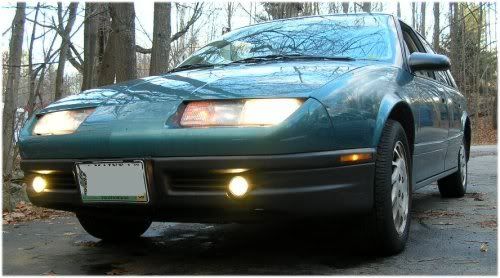I have actually done a fair bit of reading lately on this very subject out of my own curiosity.
Vapor sodium lighting in parking lots and street lights was strictly a cost issue, not visibility. They are the best bang for the buck so-to-speak, and they put out the most light for the least dollar.
Yellow lights were required by France so they could tell French-registered cars from other cars (wartime, I think).
Yellow fogs have two do with a couple of things, either Rayleigh (SP?) light scattering, or human vision processing. It is thought that light waves of differing lengths get scattered differently in fog by water droplets. However, it seems as this is not true, because the longest light waves are too small to be affected by something so (comparatively) large as a water droplet. The idea is the yellow light does not scatter, therefore it "penetrates" further. In reality, it seems this is false and yellow light does not penetrate any better than standard white light.
The more likely scenario is one of two things. One option is that by filtering the light, you are reducing the overall light emitted, therefore less light is reflected at you to process. This gives the illusion it works better, when in reality it does not.
The other option is how we process light. The human eye can process red the easiest, followed by orange, yellow, green and blue (that's pretty close, anyway). Our night vision is specifically affected by this, and why much night illumination is red. It has to do with our light receptors, but red does not affect them negatively, so we can see things in red without losing our night vision. We can't use red fog lights (thanks to our brake lights), so the next suitable option is yellow.
Blue is the worst, and the blue lights some people claim work great in snow probably only work due to the decreased light output. Humans actually have a lot of problem with blue, and while I have not tried the suggested experiments, suffice it to say it should not be used if ever possible!
An interesting side note is interior gauges. My Tacoma uses a red-orange illumination for everything. It is not very stylish, and many change the lighting to white or blue--a huge mistake! It seems Toyota was playing perfectly into our vision capabilities with their color choice. The red-orange remains visible while reducing its affect on our vision to see at night. Those people changing their instrumentation to white or blue are actually potentially being very detrimental to their vision--even if it is much more stylish.
It sounds like, however, yellow illumination may really not be very useful. The output just isn't enough to have the desired effect. However, what my question is, what if we used yellow glasses (like shooting glasses) in fog, instead of yellow lights? I do not know the answer, but from what I have read this actually may be far more beneficial than yellow illumination. Who knows? I may try it some time (but it will screw up my red-orange gauges!)
ETA: I wrote this in a hurry, and probably left some things out but you get the idea!


